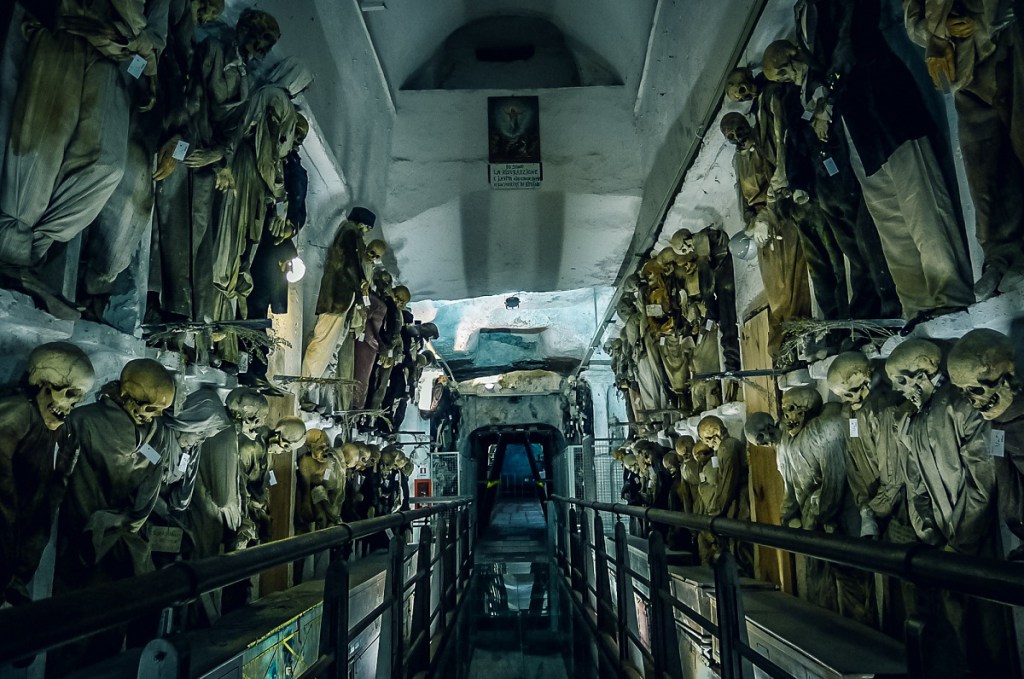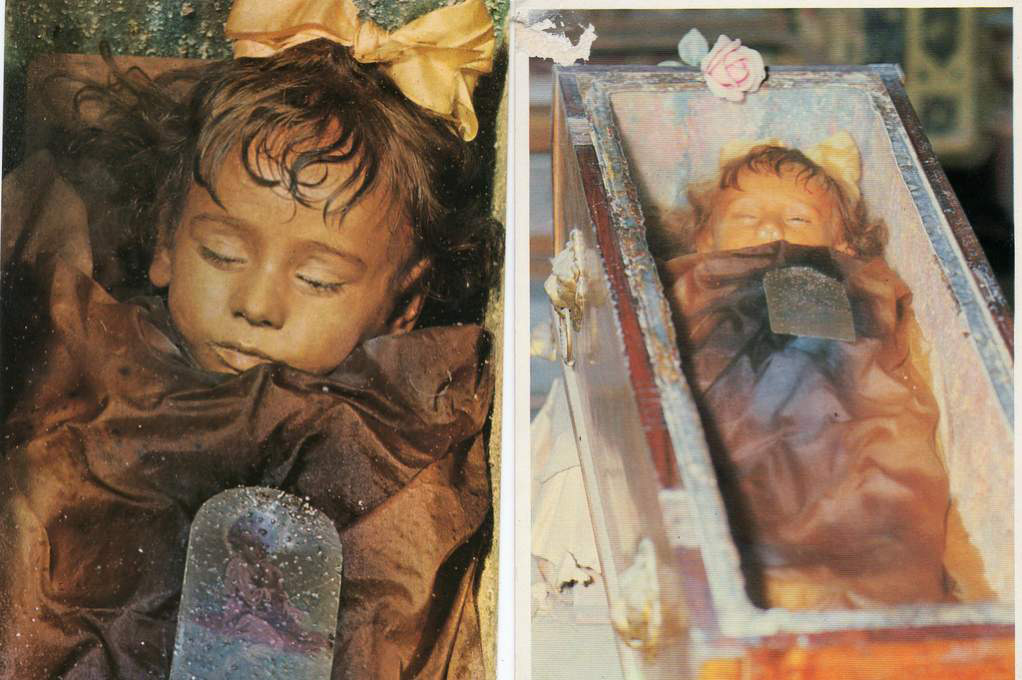Almost the most popular museum of the Sicilian city of Palermo is a monastery cemetery. Capacin’s catacombs – as it is called – the spectacle is terrible and not for the faint of heart. The burial underground galleries, in which in the open (that is, without coffins), the remains of more than 8 thousand people rest – primarily clergy, as well as aristocracy, wealthy merchants, military leaders. The skeletal, mummified and embalmed bodies of the deceased lie, stand and hang here in niches and on the shelves along the walls – this is one of the most famous and vast exhibitions of mummies in the world. If interest in someone else’s afterlife life is overpowered by fear of the dead – welcome to the underground kingdom of Aida with an excursion.
I want in Palermo!

The history of the catacombs began in the XVI century, when the monastic Order of the Kapucins settled in Sicily. Over time, the question arose about the burial place of the deceased brothers. It turned out that the best place than the crypt of the temple at the monastery (Convento Dei Cappuccini) – an underground vaulted room located near altar – could not be found. In 1599, Brother Sylvestro from Gubbio was buried here, and then the remains of several previously dead monks were transferred here. Before placing in the catacombs, the body was dried in a special chamber for 8 months, then washed with vinegar and dressed. As the cemetery filled with new “guests”, corridors and passages were added and lengthened and lengthened. In the XVIII century, it turned out that the embalming method mastered by kapuzins, combined with the specific air of the catacombs, does not allow bodies to decompose. When this became known in the world, philanthropists and sacrifice stretched into the monastery, expressing the desire after death to be not buried underground, but mothballed here. The monks did not refuse. So the catacombs became a prestigious cemetery of clergy, noble and bourgeois families Palermo.

All mummies are distributed by the status that they occupied during life, professional, gender and other signs. For example, there is a corridor of monks (the most ancient “exhibits”),
Hall of virgins, a children’s hall, a coupling hall, a male corridor. The laity are dressed in fashion for their time: silk dresses with lace and frills and hats at the ladies and expensive costumes with shirts and toads in men. Burials were carried out until 1882. After this, the exception was made only twice. For the US Vice Consul, Giovanni Patartarniti in 1911 and for the two-year-old Rosalia Lombardo, who died of pound inflammation in 1920. The mummy of the girl, resting in a glass coffin, is considered almost the most beautiful if this word is appropriate to use in the world. Her skin, hair, facial features, it seems, have not changed at all – Rosalia seemed to sleep. In honor of the girl, a chapel at the monastery was renamed.

Kapucin’s catacombs have repeatedly been mentioned by famous Spanish, Italian and French writers (for example, Guy de Maupassant mentioned this place in a “wandering life”),
What made the museum very famous throughout Europe. However, not only tourists come here, but also those people whose ancestors are buried in a crypt under the monastery. Initially, it was possible to get into the catacombs from the monastery church on top. However, in 1944 a new entrance was opened – right from Piazza Cappuccini. The museum (site) works year -round, 7 days a week in the summer and with a weekend on Sundays from October to March. Photography is prohibited.
Looking for a site for hotel booking online? Ontwotrip presents more than two million placement objects around the world.

